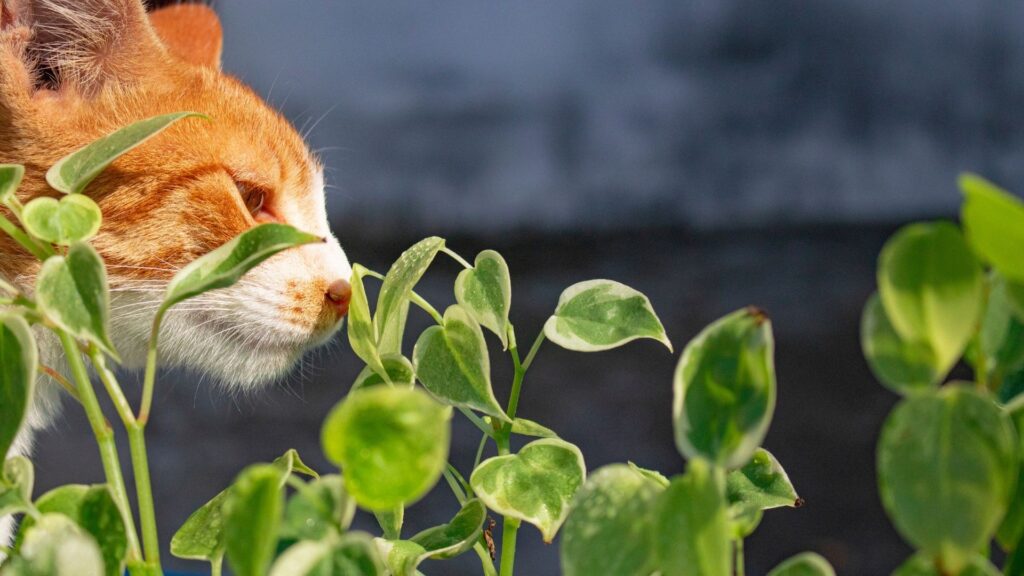
Your Pet Should Nibble a Bone, not Toxic Plants
Taking care of a pet is very similar to taking care of a curious baby or a rowdy teenager. If you have a dog who enjoys spending time in the backyard, you may have already planned your garden with him or her in mind. Your dog or cat will follow you around and become fascinated by your cut flowers, a potted plant, or festive houseplants — and before you know it, you’ve had a very sick animal on your hands. It can happen to even the most responsible pet owners. This is because some houseplants are extremely toxic to animals, and a few of them can induce liver failure and death.
Most cats and dogs will avoid consuming hazardous plants. If a curious pet happens to nibble on a deadly plant, they may suffer from stomach discomfort. It is critical to plan ahead of time what to do if your pet consumes a deadly houseplant; after all, we love our pets and want to keep them safe.
You might be shocked at how many common plants, both indoors and outdoors, are harmful to pets. In this article, Sirwiss-partnered vets discuss plants that might badly affect or even kill your pets, and then consider making a few minor changes to your landscape.
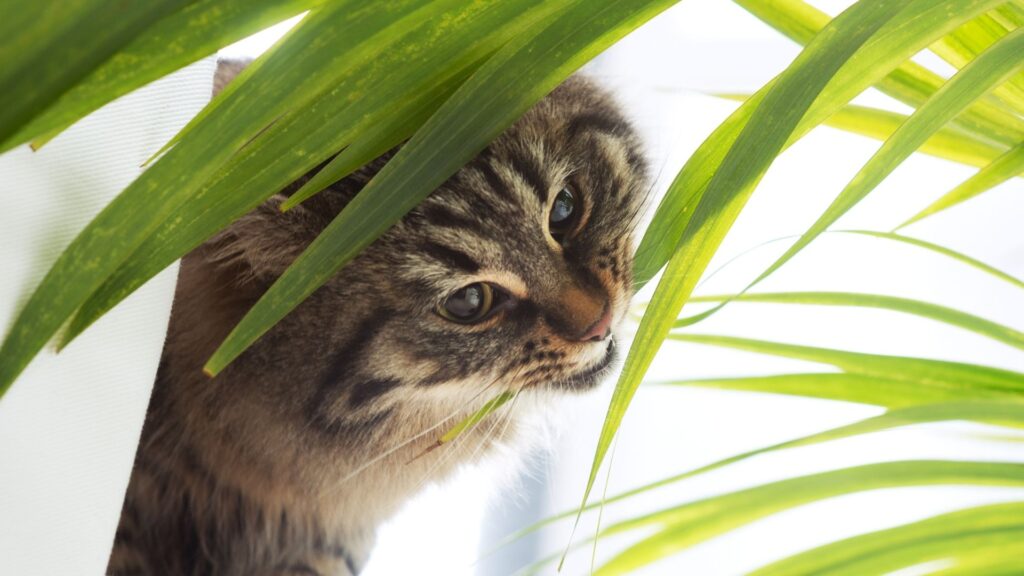
Beware of These Poisonous Plants
We tend to spend more time outdoors doing things like gardening whenever the weather and time allow us to do so. Family pets, like us, are itching to spend more time outdoors, but they and we both face the risk of accidental poisoning from plants. The following plants should be reported to your vet immediately if you think your pet has swallowed them. Never wait for signs to show; by that time, it may be too late to save the animal from poisoning.
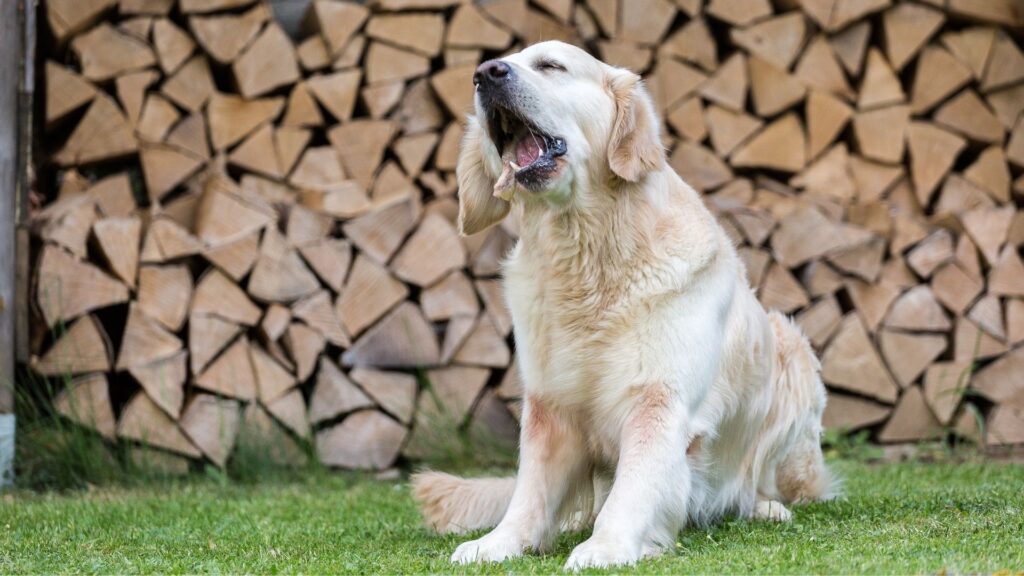
1. Daffodil
Lycorine, a substance found in these blossoms, is responsible for their nauseating effects. If the bulb or any other part of the plant is ingested, the results can include nausea, vomiting, diarrhea, stomach pain, irregular heartbeat, and slowed breathing.
2. Tulip and Hyacinth
Chemical substances like the allergenic lactones in tulips and the related alkaloids in hyacinths can induce severe gastrointestinal distress, including excessive salivation, vomiting, and diarrhea, which can lead to dehydration and other complications. Heart rate and breathing patterns can become irregular with larger ingestions (particularly of the bulb). Make sure your dog isn’t digging up the bulbs, which contain a high concentration of the plant’s deadly lactones and alkaloids despite being consumed in other parts of the plant.
3. Lily
While oxalate crystals in Peace, Peruvian, and Calla lilies produce only mild toxicity, those in real lilies (such as Tiger, Day, Asiatic, Easter, and Japanese Show lilies) can be lethal. It is unclear what it is about lilies that makes them so poisonous, but consuming even a small amount can result in kidney failure within 36 to 72 hours. Initial signs include fatigue, lack of appetite, and sometimes vomiting within a few hours. Pollen doses as little as one grain can be lethal. You should take extra precautions to prevent your cat from coming into contact with any lily, including the popular Amaryllis, Easter lilies, and Stargazer lilies over the holidays.
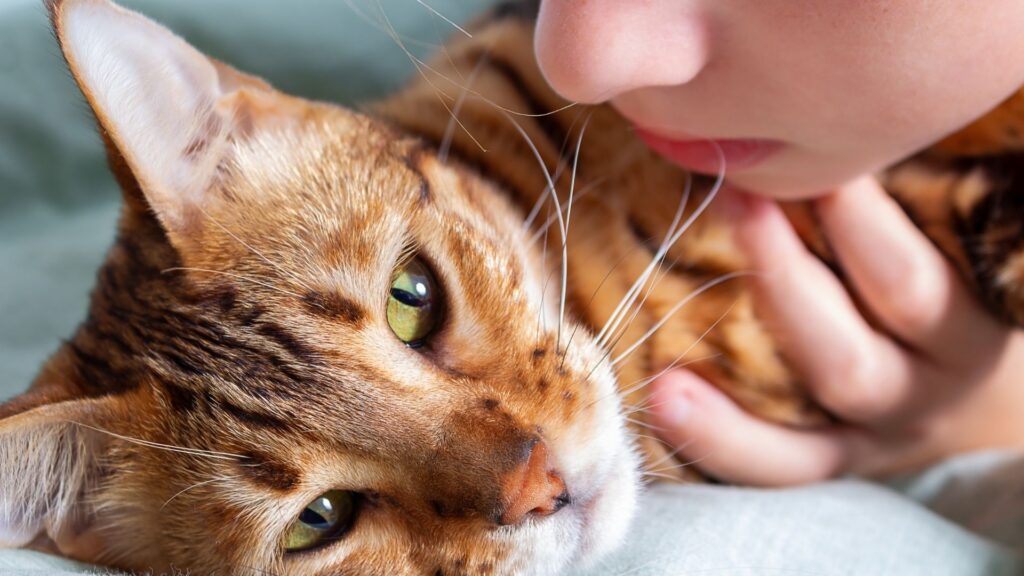
4. Lily of the Valley
Cardiac glycosides are sugars found in certain plants, and they alter how the heart muscle contracts. Ingestion of any part of the plant can lead to stomach cramps, loose stools, slow heart rate, irregular heart rhythm, and possible convulsions.
5. Crocus
Some crocus plants (Colchicum spp.) bloom in the spring, while others (Colchicum autumnale) do so in the fall. When consumed, these plants can trigger nausea, vomiting, and diarrhea. Colchicine and other alkaloids found in the autumn crocus can prevent cell division, leading to nausea, vomiting, stomach bleeding, kidney failure, and even death.
6. Chrysanthemum and Daisies
Several of the plant’s chemicals, including lactones, pyrethrins, and others, have the potential to irritate the digestive tract and disrupt the nervous system. Toxic effects manifest themselves clinically through nausea, vomiting, diarrhea, and an increase in salivation and incoordination.
7. Wisteria
Wisteria, with its purple, pink, or white cascading flowers, is as poisonous as it is attractive. The most hazardous parts of the plant are the seeds and seedpods, which can poison both small animals and children. Consider removing vines from your property if you have pets, cats, or young children.
8. Oregano
Oregano is typically grown in herb gardens for culinary use. Ingestion by cats causes intestinal distress, but it is typically not severe. However, essential oil is significantly more harmful to cats. Cats should not be given oregano essential oil as an antibiotic, unlike humans who frequently use it as a complementary medication. A cat’s ingestion of oregano essential oil can result in hepatic failure.
9. Potato
Potatoes may be a staple of your diet, but you should not feed them to your dog. All nightshade plants, including potatoes, contain the toxic chemical solanine. Both the potato and the green portion of its plant are toxic to your companion, so keep them away from both.
10. Larkspur
Larkspur is poisonous to canines, felines, and horses. It can cause neuromuscular and respiratory paralysis, as well as symptoms spanning from muscle weakness and stiffness to tremors if ingested. In the worst-case scenario, it can lead to cardiac failure and mortality.
Fertilizers. Though not Plants Can Be Fatal
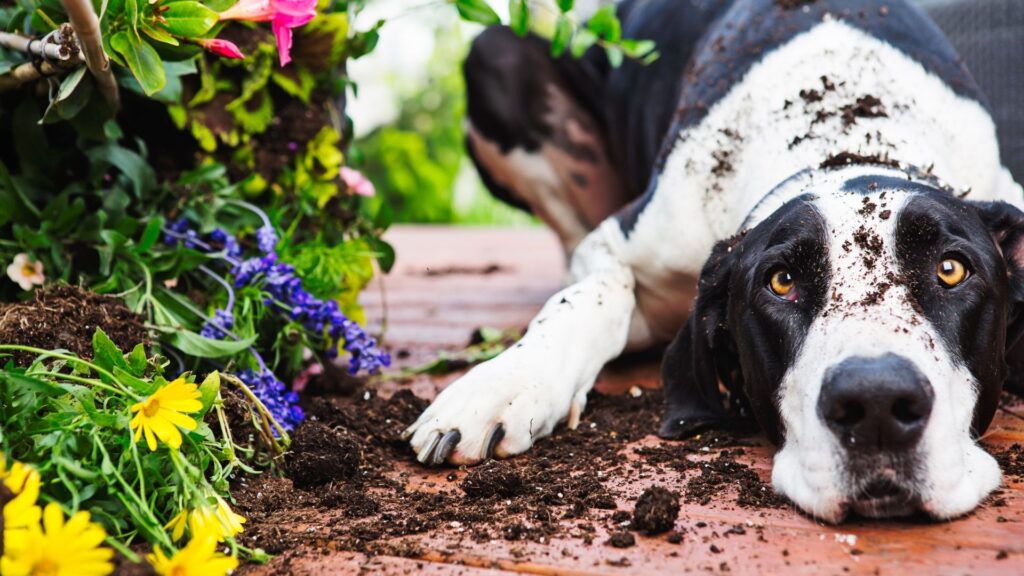
There are a few fertilizers that are more toxic than the majority, which cause only gastrointestinal irritation.
- Blood meal: If ingested this can cause vomiting, diarrhea and severe inflammation of the pancreas due to its high nitrogen content. Some types are also fortified with iron, which can result in iron overload, which is toxic.
- Bone meal: This is what makes fertilizer so desirable to dogs. When consumed in large amounts, this forms a large bowling ball of cement-like consistency in the stomach that can block the gastrointestinal tract and requires surgery to remove it.
- Rose and plant fertilizers: Some of these contain organophosphates, including disulfoton, which can cause buildup of the neurotransmitter acetylcholine that overstimulates certain receptors and is highly toxic to dogs in very small amounts. Ingestion can cause drooling, watery eyes, urination, defecation, seizures, difficulty breathing, hyperthermia and death.
- Pesticides/insecticides: Most are basic irritants and not a huge concern. However, like rose and plant fertilizers, some may contain organophosphates that cause buildup of the neurotransmitter acetylcholine if ingested, resulting in overstimulation of certain receptors.
- Iron: This is commonly added to fertilizers and can result in toxic iron overload if ingested.
Prevent Your Pets from Consuming Toxic Garden Plants
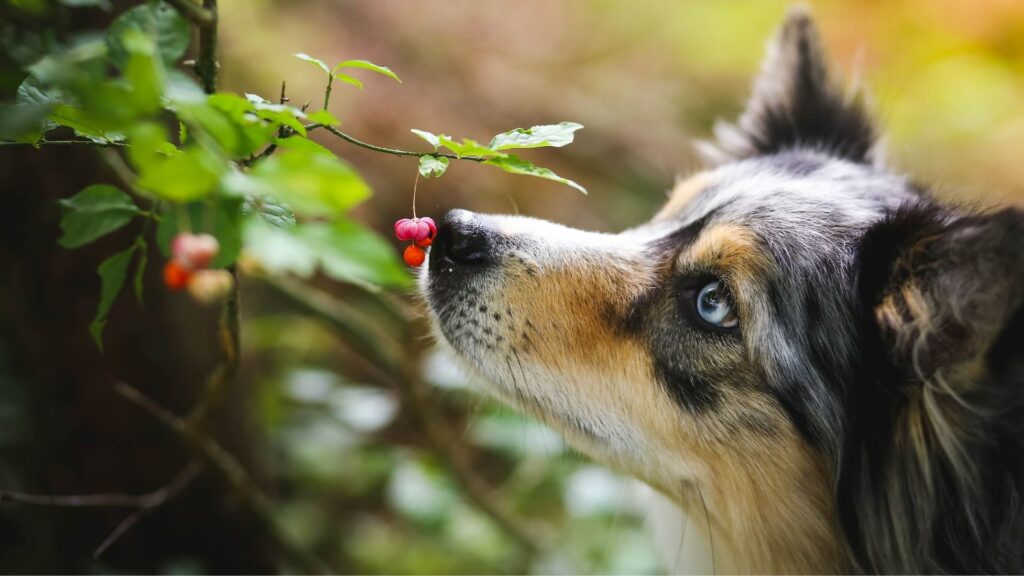
1. Be aware of toxic risks. Remember that many things that are undesirable to humans are readily consumed by dogs and cats. Learn to recognize poisonous plants and symptoms of intoxication.
2. Reduce access to plants. When ensuring that toxic substances are inaccessible, consider the animal’s ability to leap and dig. For instance, placing a house plant on top of a bookshelf may not be sufficient if cats like to leap onto high shelves. Dogs are able to unearth fertilizer and bulbs concealed beneath mulch, so covering fertile areas with mulch may not be sufficient. Always err on the side of caution when deciding which plants to transport inside or plant in the yard.
What to Do If Your Pet Eats a Toxic Houseplant
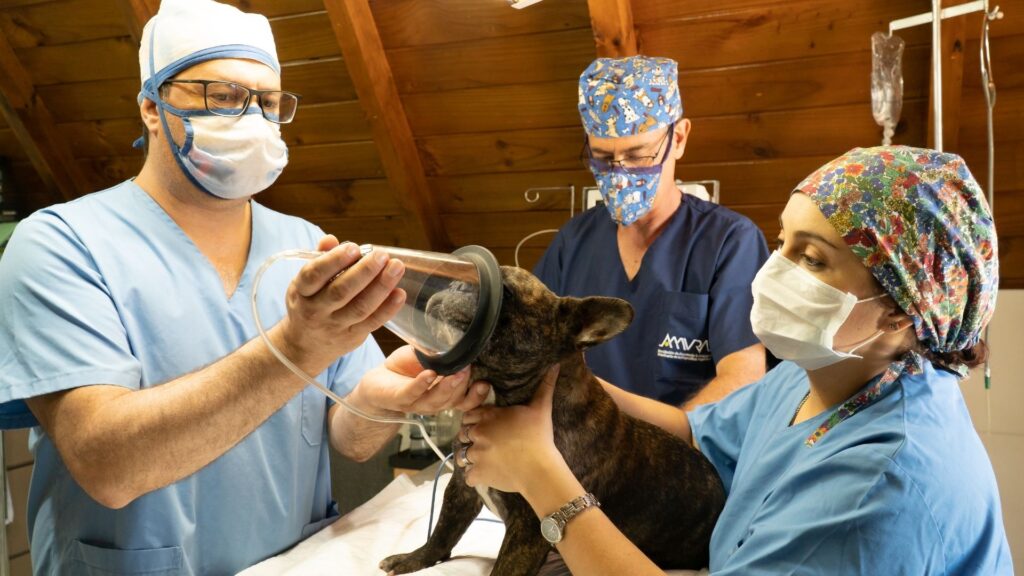
Before we call emergencies, however, let’s remember that prevention is the best medicine; for households with extremely inquisitive animals, this means removing all indoor toxic plants. Even if your pet shows no interest in plants, it is best to keep all known poisonous plants out of its reach.
It’s important to keep this emergency checklist on your refrigerator door as the last thing you need to do in an emergency is a frantic Internet search.
1. Take a pause, don’t panic and move swiftly.
2. If possible, remove the plant from your pet’s mouth.
3. Rinse the mouth with water gently.
4. If possible, try to identify the plant.
5. Observe the symptoms (mouth froth, vomiting, etc.) immediately.
6. Call your pet’s veterinarian or the Poison Control hotline. (Please Note: that there may be a fee associated with calling a pet poison control number).
It’s reassuring to know that while some toxic flora are lethal, your dog will likely only consume enough to make him uncomfortable. Usually, the mouth-burning sensation is sufficient to halt your feline companion in her tracks.